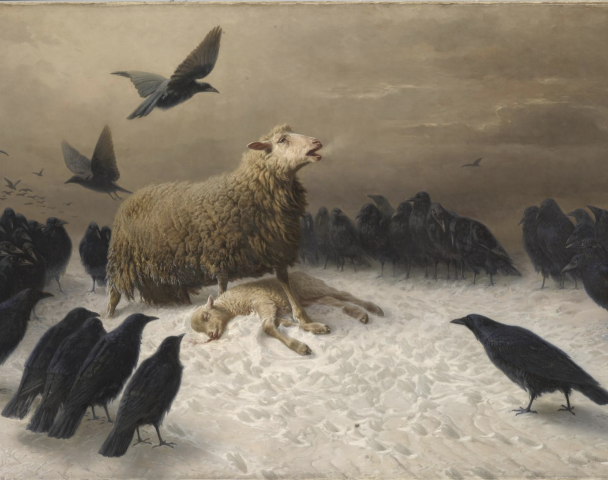Artists
Mark Dion Transformed a Working Class Pittsburgh Home Into an Immersive Artwork. It’s Dazzling—And Bittersweet
Dion's permanent installation, 'Mrs. Christopher's House,' is the most recent of the Troy Hill Art Houses founded by collector Evan Mirapaul.
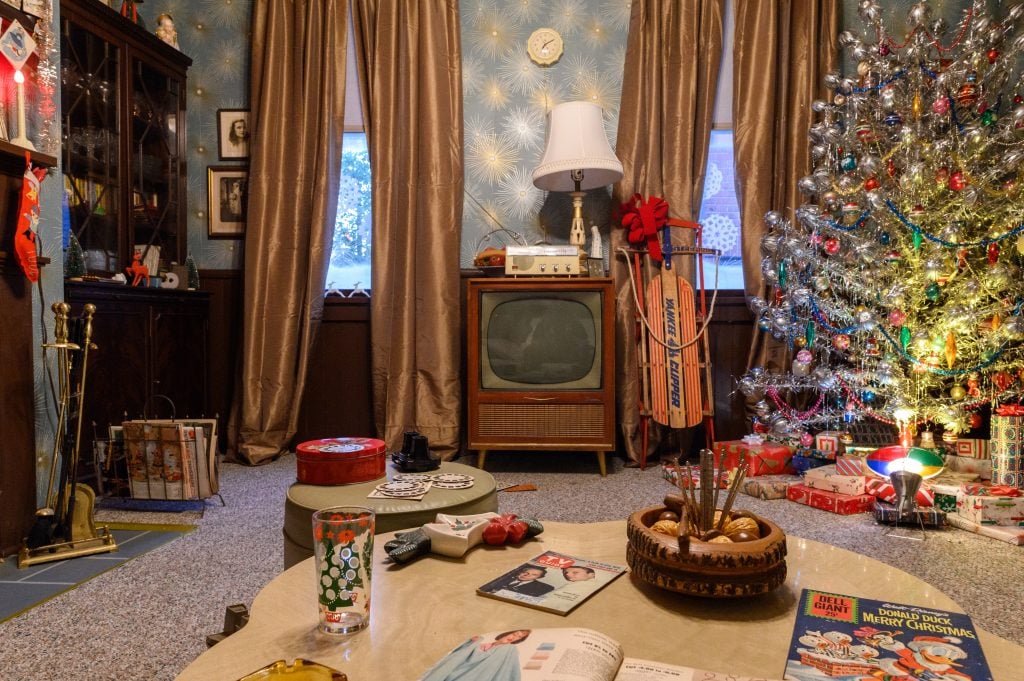
“Do you smoke?” asked the artist Mark Dion extending a cigarette in my direction. He was standing at the threshold of an unassuming home on a quiet street in Troy Hill, a working-class Pittsburgh neighborhood. Dion, bespectacled and clad in a button-down shirt, already held one lit cigarette in his hand. He waved it around without puffing on it. “I forget what to do with these,” said the artist, who doesn’t smoke, with a smile. The cigarettes, Dion explained, were among the finishing touches for his latest work Mrs. Christopher’s House. Over the past three years, Dion has been steadily transforming the interior of the house behind him—wholly unremarkable from its facade—into an immersive full-scale artwork. He’d been making the trek from New York’s Hudson Valley to Pittsburgh, monthly, even weekly, at times, for years. Now, on a bright October afternoon, he was refining the smallest details. “I’m 96.5 percent done,” he told me.

Mark Dion. Photo: Jorge Colombo.
The cigarette butts were needed to fill an ashtray, destined for an installation on the house’s first floor. There, behind a large plate glass window, Dion had created a to-scale recreation of a 1961 living room on Christmas Eve, complete with wrapped presents, vintage liquor bottles, and stockings hung on the mantel. A conceptual artist known for his cabinet of curiosity installations, Dion, 63, has a keen eye for detail, and here was no exception.
Stepping into the house is like entering a mini-retrospective of Dion’s career. Traversing the home’s first two stories and attic, one encounters semi-autonomous installations that reprise and reimagine installations from throughout his career (in one room, for instance, a huge, life-like stuffed brown bear appears sleeping, a nod back to his 2019 exhibition “Follies” at Storm King). Tanya Bonakdar, his representing dealer, explained in an email: “In contrast to his existing permanent projects, this three-story environment serves as both a retrospective of Dion’s core themes and an immersive, new experience… Each tableau not only challenges our knowledge structures but also underscores Dion’s commitment to questioning our relationship with natural science and history.”
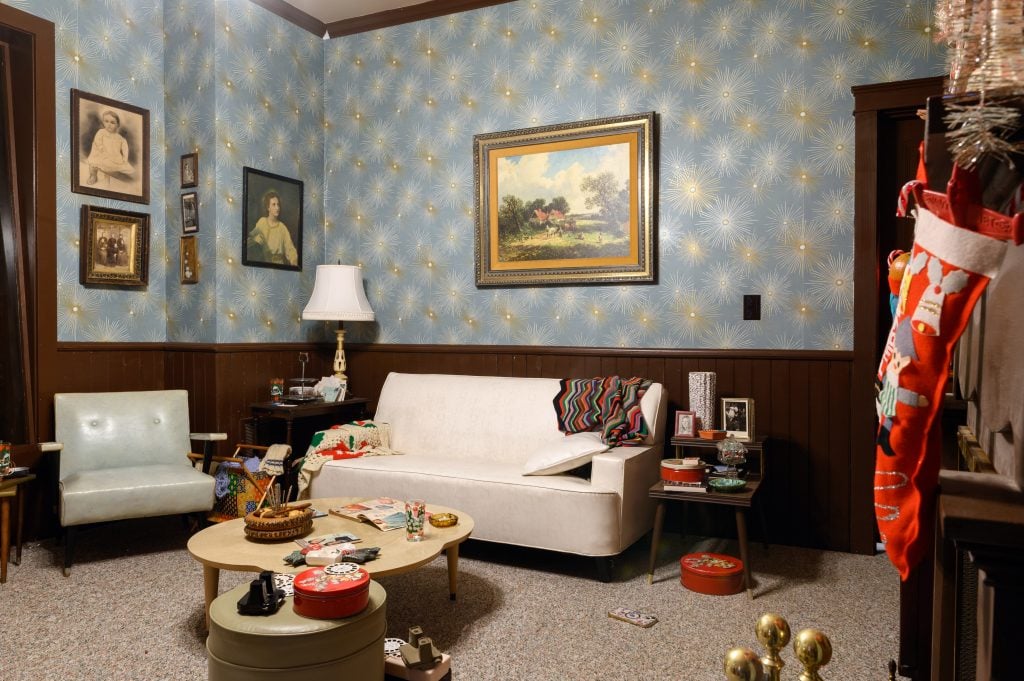
Mrs. Christopher’s House by Mark Dion at Troy Hill Art Houses, Pittsburgh, 2024. Photo: Rebecca Kiger.
Mrs. Christopher’s House is also a contemplation of the house itself and the history it represents. Dion explained that locals have known the home as Mrs. Christopher’s House for generations and said: “We saw no good reason to change that.” From 1956 to 2018, the house belonged to the Christopher family. When Margaret Christopher, the real-life Mrs. Christopher, passed away in 2017, her children reached out to Evan Mirapaul, their neighbor and a local collector, to see if he was interested in purchasing it.
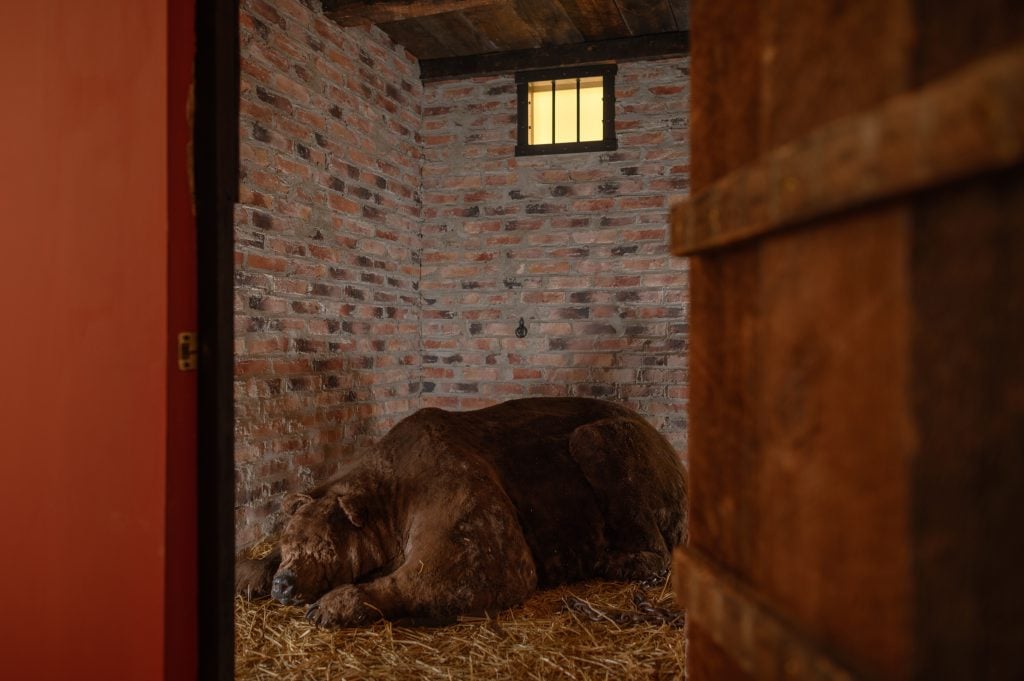
Mrs. Christopher’s House by Mark Dion at Troy Hill Art Houses, Pittsburgh, 2024. Photo: Rebecca Kiger.
Mirapaul, who lives in a big brick house just a few yards away, is the visionary collector behind Troy Hill Art Houses, of which Mrs. Christopher’s House becomes the fourth, and possibly last. Inspired by a 2007 trip to Naoshima, Japan’s “art island” and its Art House Project, Mirapaul wanted to bring something similar to Pittsburgh. In 2011, the collector purchased a first home which was gutted, reimagined, and debuted in 2013 as the La Hütte Royal by German artist Thorsten Brinkmann. Kunzhaus by Robert Kusmirowski debuted in 2016, and artist duo Lenka Clayton and Phillip Andrew Lewis’s Darkhouse Lighthouse premiered in 2022. The collector, who upon my visit was almost always in the company of his dachshund puppy, was both infectiously enthusiastic and frank. He has never shied away from the enormity of these projects, which entailed bringing these homes back to their studs, and constant navigation. Dion, he said, had been in his mind for years. “He was on my original ‘dream’ list when I first started pondering the possibility of the project… I always wanted him to be a part of it,” he said.
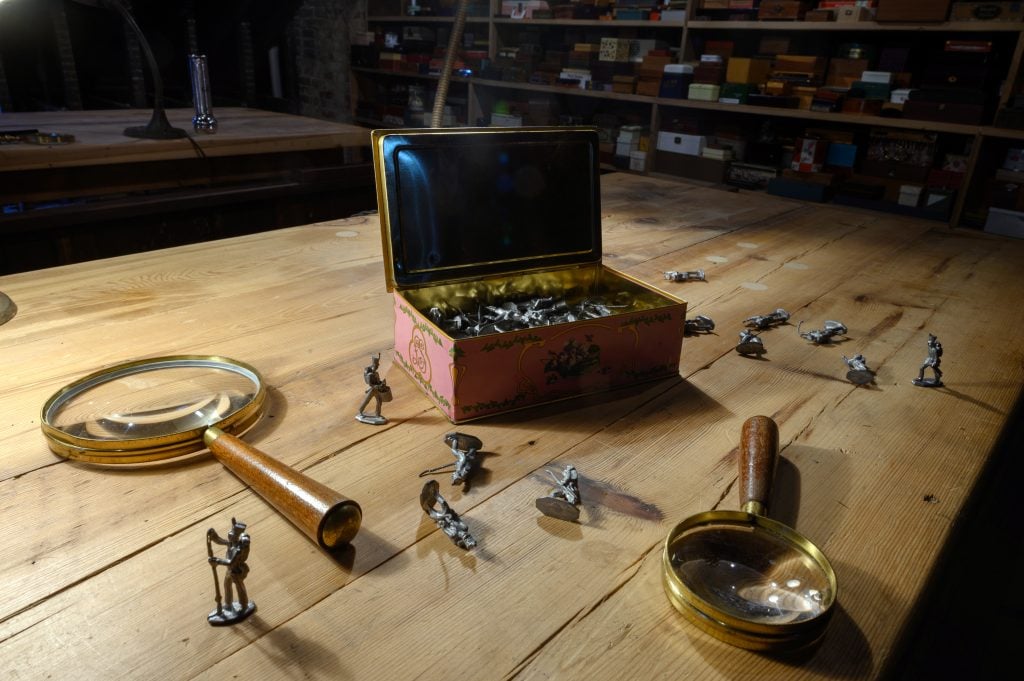
Mrs. Christopher’s House by Mark Dion at Troy Hill Art Houses, Pittsburgh, 2024. Photo: Rebecca Kiger.
Coming onto the project, Dion knew he had a rare opportunity to give his interests a permanent home. He wanted it to be something fruitful to return to again and again. Over the decades Dion has completed dozens of intricate and complex temporary installations and exhibitions including “Tate Thames Dig” at the Tate; “Rescue Archeology” at the Museum of Modern Art; “The Trouble with Jellyfish” at Le Laboratoire in Cambridge, and “Misadventures of a 21st-Century Naturalist” at the ICA Boston. In the past few months alone, he installed “Excavations” an installation at La Brea Tar Pits & Museum, Los Angeles, and “Delirious Toys,” a curated wunderkammer of toys selected from the collection of Bundeskunsthalle in Bonn, Germany. These installations are intensive and encompassing endeavors to realize, but only exist in their extant forms for a few months. Mrs. Christopher’s House, meanwhile, is free and open to the public year-round by appointment (it officially opened October 26).
It doesn’t disappoint. The tableau of Christmas Eve is an immersive introduction to the whole of Dion’s poignant vision. Entering the home, it seems like stumbling into an intimate, domestic scene—a mid-century living room with walls covered in blue starburst wallpaper glitters with holiday decorations and details. The hundreds of objects that make up this room, dating from the ’50s and ’60s (Dion noted that the installation is not a time stamp of 1961 but an evocation of the eras), offer clues to this unseen family: an aluminum Christmas tree and accompanying color wheel, a framed portrait of Kennedy, a generic landscape painting over the sofa. Who were they, we wonder.
“This is a time when certain blue-collar people felt like they were upwardly mobile. They could shower their children with presents that undoubtedly they didn’t have. Those children would probably go to university,” Dion considered. “The American fantasy of upward mobility and stability was alive and, for a family like that, these years were the apex of this house, which has been here since the 19th century, and Christmas morning, the apex of the year. This is what everything’s been building up to.”

Mrs. Christopher’s House by Mark Dion at Troy Hill Art Houses, Pittsburgh, 2024. Photo: Rebecca Kiger.
Collecting the objects on display was a massive undertaking and a community effort. “We put the word out early and there were a lot of local people who knew the parameters of various rooms,” said Dion “The phone was constantly ringing with people saying ‘My grandmother has this’ or ‘I saw that at a yard sale.’” Those objects can have an auric quality, evoking moments of heartfelt emotion from visitors. “As people have begun to be introduced to the work and were able to see it complete for the first time, I’ve been surprised and touched by just how moved people are by the piece. People have teared up,” said Mirapaul of the installation.
Dion acknowledged: “It can be a Where’s Waldo for things that people might have had.” I, for one, recognized a porcelain Virgin Mary statuette on the wall that my grandmother had owned. And I had another strange moment of recognition; plastic mistletoe is hung overhead, right on the other side of the glass window that is a barrier between the viewer and the installation. The glass is so clear that it seems to disappear at a certain angle. The impressive pane is a material nod to Pittsburgh’s industrial legacy; the city’s been involved in glass manufacturing since 1797. I know this because my grandfather worked for Pittsburgh Plate Glass Company (now called PPG Companies). Similarly, the aluminum Christmas tree and an aluminum train set, hint at another of the city’s industrial heritage. “Nostalgic” might be one way of describing the room, but for me, the effect was more uncanny—that the past is all right there, right on the other side of a threshold, one that should I reach out to touch it, could possibly disappear.
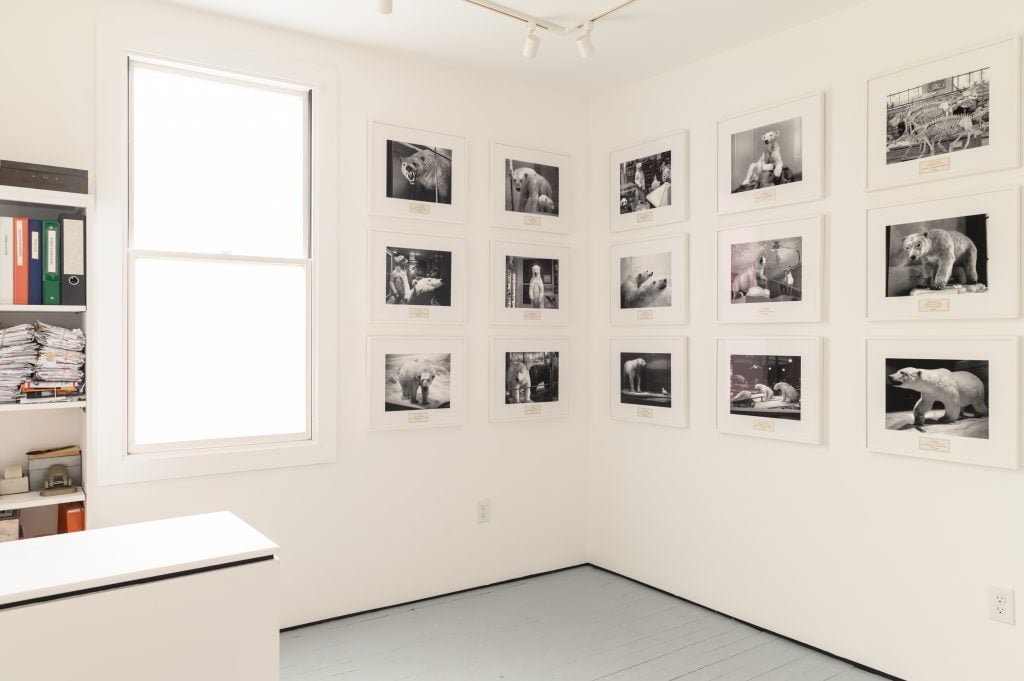
Mrs. Christopher’s House by Mark Dion at Troy Hill Art Houses, Pittsburgh, 2024. Photo: Rebecca Kiger.
On the second floor, the disorienting but pleasant surprises continue. Here, Dion has transformed a 1970s bathroom into a dungeon with the massive stuffed bear seemingly sleeping inside. It’s a fairytale-like gesture. The house was “gutted to the studs” during renovations, he told me, and the home’s original exposed brick appears almost medieval behind a small, wooden door with a metal knocker.
A hint of absurdist humor matched with real curiosity makes Dion’s works work well. In the next room, he has created a 1990s Lower East Side gallery with tracked overhead lighting and stacks of mail (R.I.P.) on the bookshelves. Displayed on the walls are 28 black-and-white photographs of taxidermied polar bears taken at natural history museums and collections over the years.
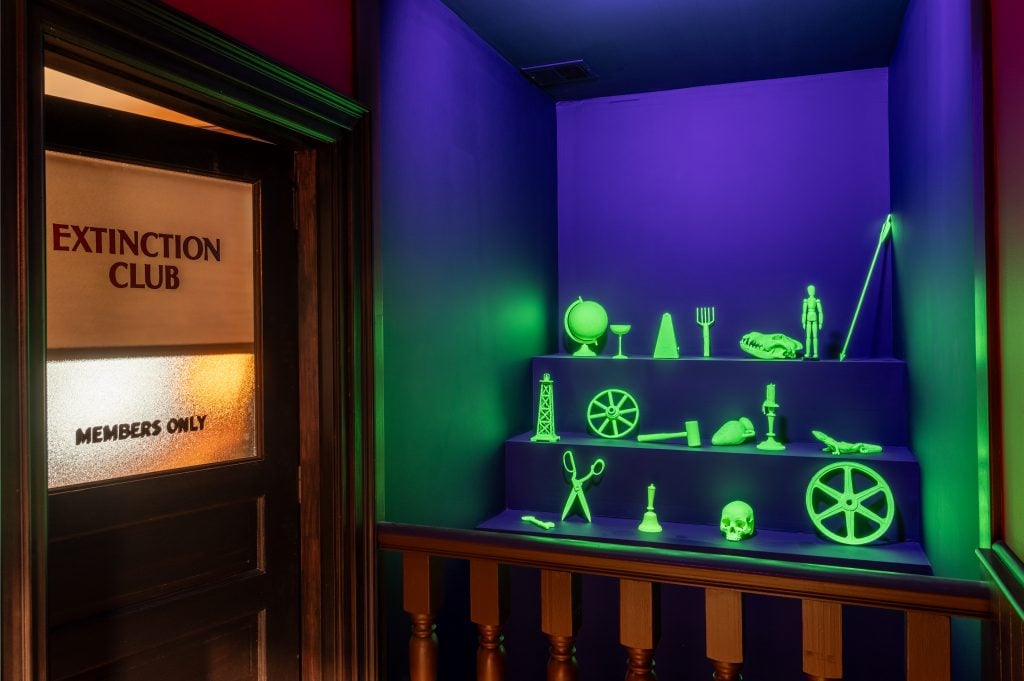
Mrs. Christopher’s House by Mark Dion at Troy Hill Art Houses, Pittsburgh, 2024. Photo: Rebecca Kiger.
From here, one passes a display of contemporary memento mori; the objects glow, painted with fluorescent paint, and include everything from a skull to a miniature oil derrick. The Extinction Club follows; it is a room with the feel of a university club, with deep armchairs and shelves of leather-bound books. The space is devoted to extinct animals and is vaguely reminiscent of New York’s Explorer’s Club, where Dion, in 2012, had his exhibition “Phantoms of the Clark Expedition.” Drawings of now-extinct animals hang on the walls. It’s an ambiguous space, one that seems to conjure a near future, but also the past. The room builds from the polar bears, already endangered in the 1990s, as seen in the previous room. It’s a comfortable space to linger in.
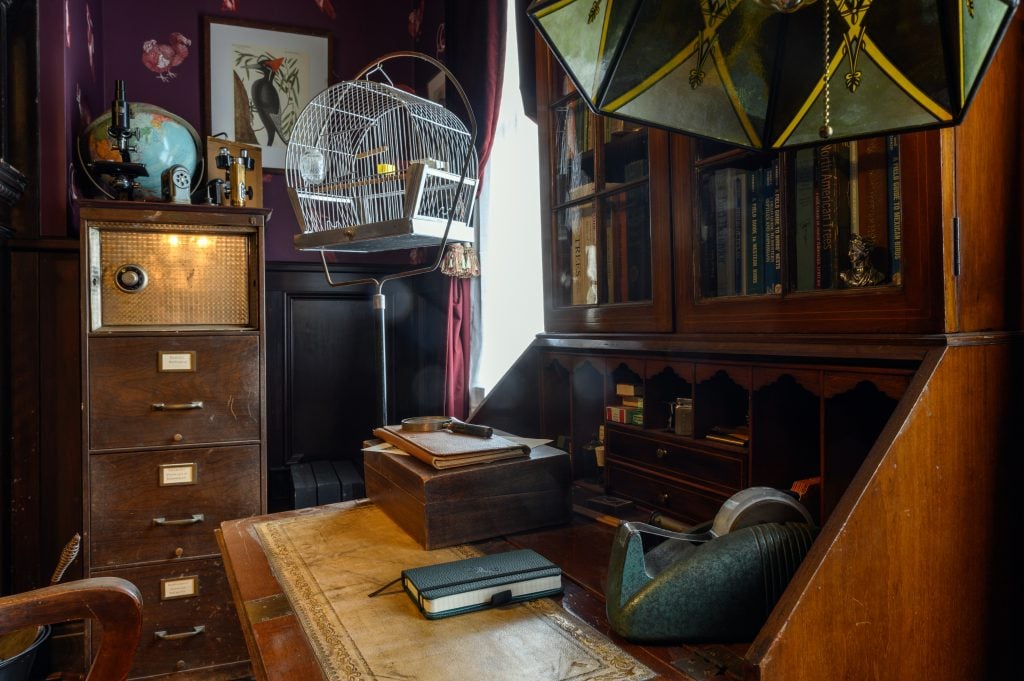
Mrs. Christopher’s House by Mark Dion at Troy Hill Art Houses, Pittsburgh, 2024. Photo: Rebecca Kiger.
Dion’s works have engaged with the discourse around environmentalism and climate change for decades; his earliest photographs of taxidermied polar bears go back to the 1980s. I wondered how he might have felt, addressing these subjects more than 30 years later, and in an age of regressive environmental policy.
“Thinking about extinction depresses me, certainly. And it makes me angry,” he said. His earlier works were more rooted in information, didactic to a point, because he thought, “Clearly if people knew these facts we would change.” That argument can’t be made in our time, he thinks. “It’s not that people don’t know. It’s something more complex,” he reflected, “My work has moved from a place of advocacy and even activism to a sense of mourning. That’s very much what this space is: it’s a space to say goodbye.”
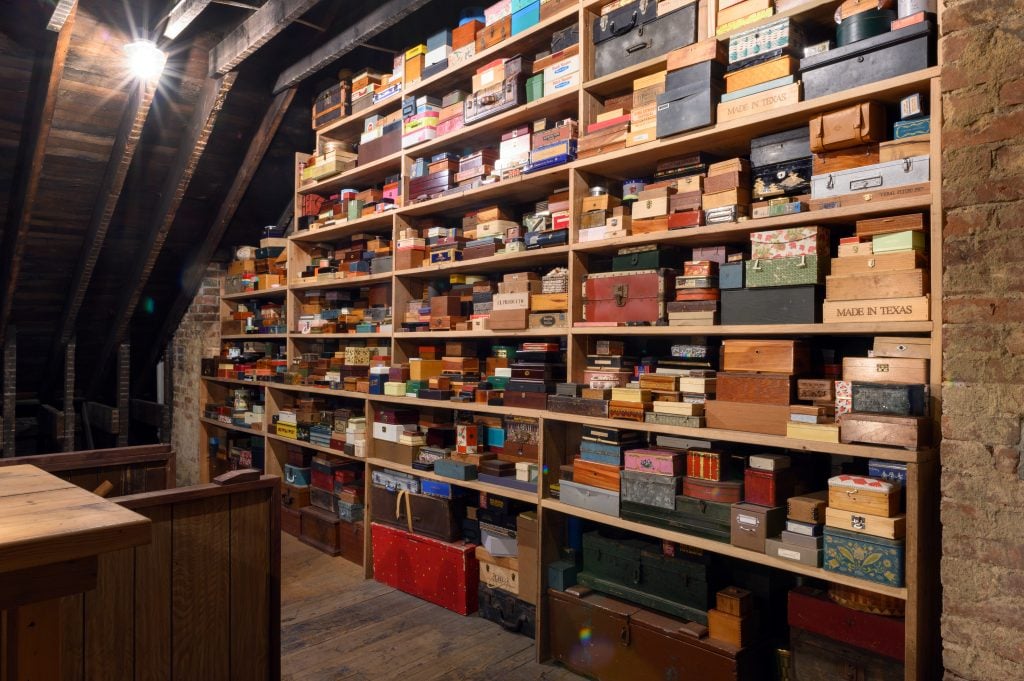
Mrs. Christopher’s House by Mark Dion at Troy Hill Art Houses, Pittsburgh, 2024. Photo: Rebecca Kiger.
Even in a place of farewell, Dion remains the searcher, an archaeologist of the contemporary moment, and a teacher. Beyond the Extinction Room, we ascend one more floor to the attic where Dion invites people to explore curiosities themselves. One wall is stacked with myriad boxes filled with small curiosities. Visitors are welcome to take down the boxes, to touch and draw the objects inside. On the other side of the attic, meanwhile, are 400 glass jars filled with specimens of all sorts for viewing only. Here are everything from knots of marine rope to a scorpion. There are small jokes, too. “The proximity of the jar of mussels and the jar of eggshells are an allusion to Marcel Broodthaers,” said Dion.
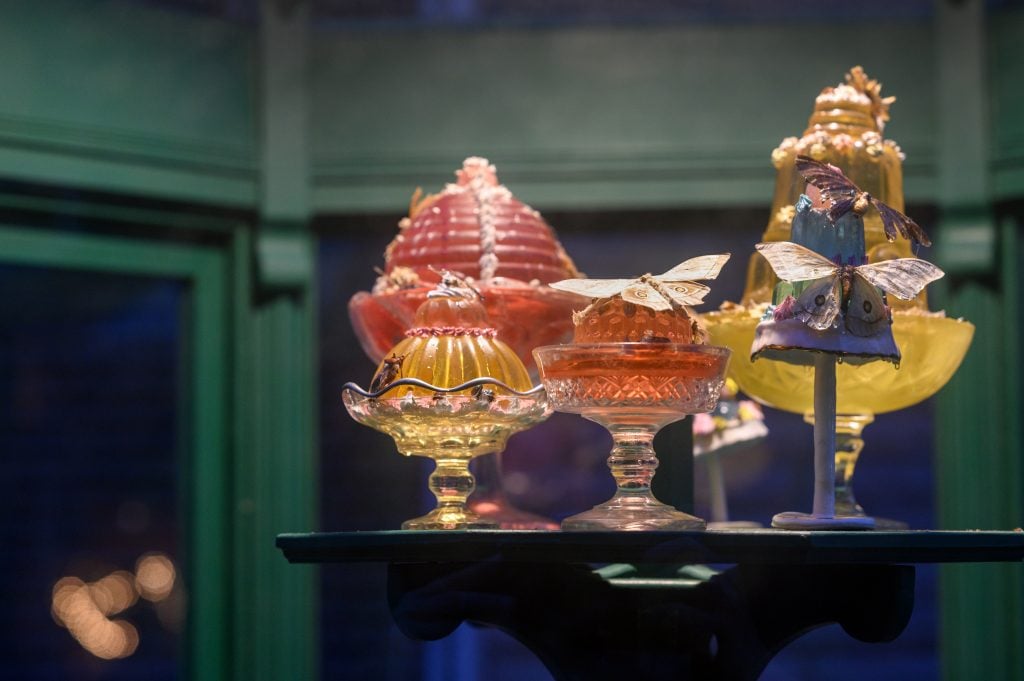
Mrs. Christopher’s House by Mark Dion at Troy Hill Art Houses, Pittsburgh, 2024. Photo: Rebecca Kiger.
Exiting the house, Dion leaves us with something sweet, sort of: in the yard is the Confectionary Conservatory of Wonder, a glass enclosure something like a miniature greenhouse. It is filled with opulent molded gelatin desserts displayed in delicate pressed-glass coupes, in pretty pinks and greens. Stepping closer, though, the visual attraction gives ways to revulsion: the desserts are covered in dead insects. The artist made this work with his wife, the artist Dana Sherwood, with whom he sometimes collaborates. This work offers the last of these push-pull moments Dion does so expertly. We leave the house having crossed across centuries, landscapes, and histories, all within the storied vessel of a single home. The sensation I was left with was bittersweet, that even amid detritus and disaster, treasures are waiting, hiding in plain sight. Dion himself feels at peace with the work. “Even if I started it all over again, with no confines, I don’t think I’d change anything,” he said
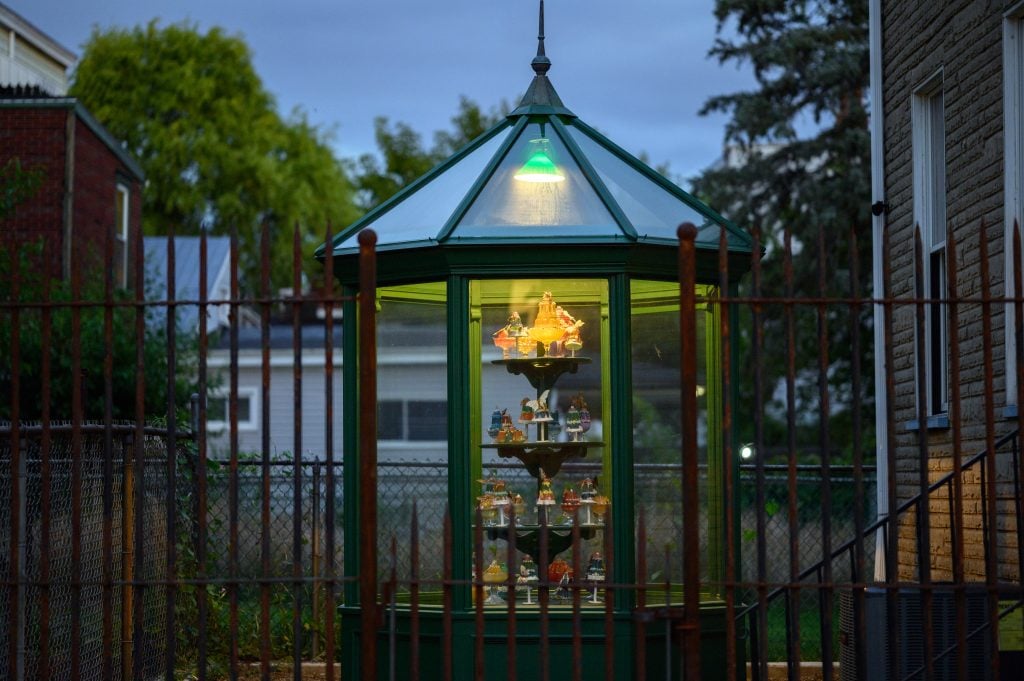
Mrs. Christopher’s House by Mark Dion at Troy Hill Art Houses, Pittsburgh, 2024. Photo: Rebecca Kiger.





